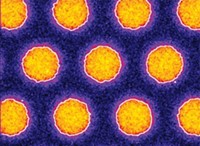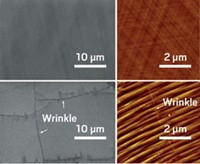Advertisement
Grab your lab coat. Let's get started
Welcome!
Welcome!
Create an account below to get 6 C&EN articles per month, receive newsletters and more - all free.
It seems this is your first time logging in online. Please enter the following information to continue.
As an ACS member you automatically get access to this site. All we need is few more details to create your reading experience.
Not you? Sign in with a different account.
Not you? Sign in with a different account.
ERROR 1
ERROR 1
ERROR 2
ERROR 2
ERROR 2
ERROR 2
ERROR 2
Password and Confirm password must match.
If you have an ACS member number, please enter it here so we can link this account to your membership. (optional)
ERROR 2
ACS values your privacy. By submitting your information, you are gaining access to C&EN and subscribing to our weekly newsletter. We use the information you provide to make your reading experience better, and we will never sell your data to third party members.
Materials
Catalyst Stimulates Self-Doping In Silicon Nanowires
Aluminum mediates silicon nanowire growth and becomes absorbed in the growing structure in the process
by Mitch Jacoby
April 8, 2013
| A version of this story appeared in
Volume 91, Issue 14
Doping semiconductors such as silicon with select impurity atoms is a common method for customizing the material’s electronic properties for various applications. Yet atomic-level control and understanding of doping processes remain elusive. Some of those details have now been revealed by a study that pinpointed the three-dimensional position and elemental identity of the atoms in doped silicon nanowires (Nature, DOI: 10.1038/nature11999). Such nanowires are already used or are being developed for use in nanoelectronics, biosensing, and other applications. Oussama Moutanabbir of École Polytechnique of Montreal, Dieter Isheim and David N. Seidman of Northwestern University, and coworkers grew silicon nanowires via an aluminum-catalyzed vapor deposition method and generated atom-specific tomographs of the wires. The team found that aluminum triggers a self-doping process, resulting in an unexpectedly high concentration of aluminum atoms evenly distributed throughout the wires. Aluminum doping during nanowire growth enhances silicon’s charge conductivity. This self-doping process sidesteps the need for postgrowth doping, which is required for the more common gold-catalyzed silicon nanowires. The team proposes that these findings, which they rationalize on the basis of a solute-trapping model they developed, may lead to nanowires with tailored shapes and chemical compositions.





Join the conversation
Contact the reporter
Submit a Letter to the Editor for publication
Engage with us on Twitter